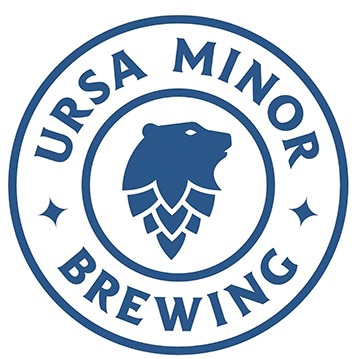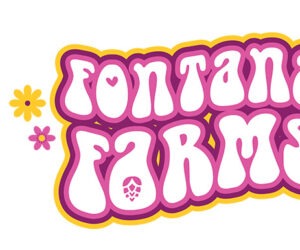Ursa Minor Brewing
For Ben Hugus, Co-Founder of Ursa Minor Brewing in Duluth, Minnesota, craft beer has been a guiding light; a “north star.” Nestled in the Lincoln Park Craft District, Ursa Minor Brewing now aims to serve as a beacon for its entire community, drawing people together through a shared love of well-crafted beer and genuine connection.
“We see ourselves as having found our way home through craft beer and have fallen in love with the community that surrounds the craft industry,” Hugus says. “Throughout history, people have found their way home using the North Star as their guide — Ursa Minor, otherwise known as the Little Dipper, is the constellation that contains the North Star (Polaris). Like the North Star, beer has guided us to our home. We hope our beer does the same for others.”
Ursa Minor utilizes local ingredients when it can, both for its beer and its popular wood-fired pizzas (the taproom is also a pizzeria).
Like many in the craft beer world, Hugus’ journey began with a homebrewing kit and a big dose of scientific curiosity. As a biology and chemistry student in college, he was captivated by the transformative power of yeast. “The almost alchemical flavor changes that yeast can facilitate . . . it is truly inspiring to think that a microscopic creature can make something sweet and intolerably bitter into a complete and beautifully balanced beverage,” he says.
This initial fascination blossomed into a lifelong passion and eventually, of course, a professional career. Hugus’ approach is simple: “Always pursuing a way to make our beers better, more flavorful, and consistent.”
The brewery’s ever-evolving beer lineup is guided, in part, by the palates of their patrons. “We really look to our customers to help us decide what we should be pursuing next,” Hugus says. “If enough people ask, we start putting time and effort in developing new and fun ways to make that style shine!”
The tap list at Ursa Minor runs the gamut from IPAs and stouts, to Belgian styles, fruited sours, and a fan-favorite cream ale. They also offer hard seltzers and non-alcoholic beer options so everybody can find something to fit their tastes in the tap room.
Bear Hop IPA has been a staple at Ursa Minor almost since its beginning in 2018. When the brewery found itself navigating a market flooded with hazy IPAs, Bear Hop was conceived as a nod to the classics. “The concept was simple: A classic and bitter IPA with a baseline of traditional piney and grapefruit character, but accented with a hint of juicy pineapple,” Hugus says. “A beer brewed for the classic IPA lover.”
Bear Hop IPA is considered an American IPA, though Hugus notes with its clarity, bitterness, and citrus-
forward profile, it could easily be classified as a West Coast IPA as well, a style which seems to be enjoying a resurgence in popularity of late.
The secret to the beer’s distinctive pineapple note lies in a specific hop variety — the one that Eddy is asking about. “SultanaTM hops are unique and have a particular pineapple flavor and aroma that is hard to replicate with another hop,” Hugus explains. To maximize this characteristic, the brewery employs a targeted approach. “In this recipe, SultanaTM is used only in the dry hop in order to focus on extracting and highlighting this pineapple characteristic in particular.”
With so many new hop varieties on the market, it can be difficult at times to pin down new favorites. But Sul-tanaTM — first released under the name Denali by the hop breeding group at Hopsteiner in 2016 and then renamed in 2019 after a naming dispute — has established itself as a hop variety worthy of experimentation. SultanaTM stands out for its gigantic cones (hence its original name, Denali, after North America’s largest mountain) and high total oil content.
While pineapple from SultanaTM hops are a huge part of Bear Hop IPA, those flavors are complemented by notes of mandarin orange from Centennial (the only variety added prior to dry hopping) and Amarillo® hops. Both varieties, Hugus says, are great complements to SultanaTM.
The intentionality that goes into Bear Hop IPA extends to the brewery’s other hoppy offerings as well. Hugus generally sticks to a “less is more” philosophy. “We definitely try to limit the number of different varieties that enter each beer. Only in very special cases do we ever go beyond three hop varieties in a beer.”
Hugus’ number one tip for homebrewers looking to refine their IPAs is to exercise restraint and intention with their hop additions. “Pick one, two, or maximum three hop varieties and have good reasoning for including each one,” he says.
Ursa Minor Brewing’s Bear Hop IPA clone

(5 gallons/19 L, all-grain)
OG = 1.064 FG = 1.012
IBU = 50 SRM = 4 ABV = 6.8%
Ingredients
12 lbs. (5.4 kg) North American 2-row malt
1.3 lbs. (0.6 kg) dextrine malt
6 AAU Centennial hops (60 minutes) (0.6 oz./17 g at 10.3% alpha acids)
6 AAU Centennial hops (30 minutes) (0.6 oz./17 g at 10.3% alpha acids)
6 AAU Centennial hops (15 minutes) (0.6 oz./17 g at 10.3% alpha acids)
2 oz (57 g) SultanaTM hops (dry hop)
2 oz (57 g) Amarillo® hops (dry hop)
2 oz (57 g) Centennial hops (dry hop)
SafAle US-05, Wyeast 1056 (American Ale), or White Labs WLP001 (California Ale) yeast
3⁄4 cup corn sugar (if priming)
Step by Step
With the goal of creating a moderately dextrinous wort, mash in with 2.75 gallons (10.4 L) of 162 °F (72 °C) strike water to achieve a single infusion rest temperature of 151 °F (66 °C). Hold at this temperature for 60 minutes.
With sparge water at 170 °F (77 °C), collect about 6 gallons (23 L) of wort. Bring wort to a boil.
At the start of boil, set a timer for 60 minutes, then add the first Centennial hop addition. Add the second Centennial hop addition at 30 minutes, and the third Centennial hop addition with 15 minutes remaining.
Chill wort to 65 °F (18 °C). Pitch yeast and, if using temperature control, set the fermentation temperature to 68 °F (20 °C). Ferment until gravity is within 1–2 points of your target final gravity.
Add dry hop additions 1–2 days before reaching terminal gravity. Allow the dry hops to soak for 3–4 days before packaging.
Ursa Minor Brewing’s Bear Hop IPA clone
(5 gallons/19 L, extract with grains)
OG = 1.064 FG = 1.012
IBU = 50 SRM = 4 ABV = 6.8%
Ingredients
6.4 lbs. (2.9 kg) extra light dried malt extract
1.3 lbs. (0.6 kg) dextrine malt
6 AAU Centennial hops (60 minutes) (0.6 oz./17 g at 10.3% alpha acids)
6 AAU Centennial hops (30 minutes) (0.6 oz./17 g at 10.3% alpha acids)
6 AAU Centennial hops (15 minutes) (0.6 oz./17 g at 10.3% alpha acids)
2 oz (57 g) SultanaTM hops (dry hop)
2 oz (57 g) Amarillo® hops (dry hop)
2 oz (57 g) Centennial hops (dry hop)
SafAle US-05, Wyeast 1056 (American Ale), or White Labs WLP001 (California Ale) yeast
3⁄4 cup corn sugar (if priming)
Step by Step
Place the dextrin malt in a muslin bag. Steep in 2 gallons (8 L) of water at 155–165 °F (68–74 °C) for 30 minutes. Remove the grain bag, placing it in a colander over the kettle, and gently rinse with 1 gallon
(4 L) of warm water.
Add water to the kettle to reach a pre-boil volume of approximately 6 gallons (23 L). Bring to a boil, then turn off the heat and carefully stir in the dry malt extract until fully dissolved.
Follow the remainder of the all-grain recipe.




